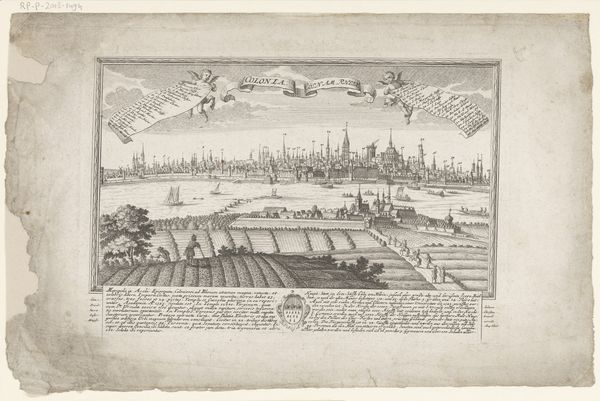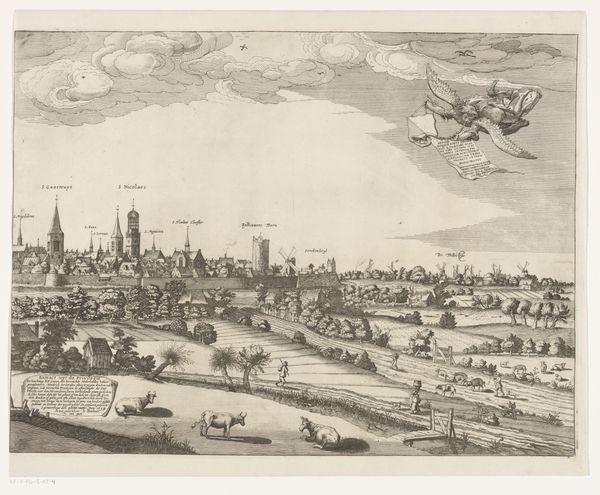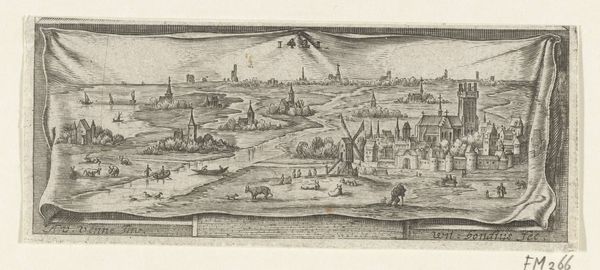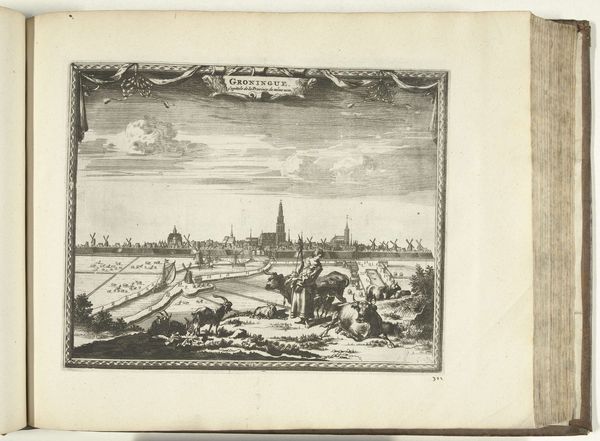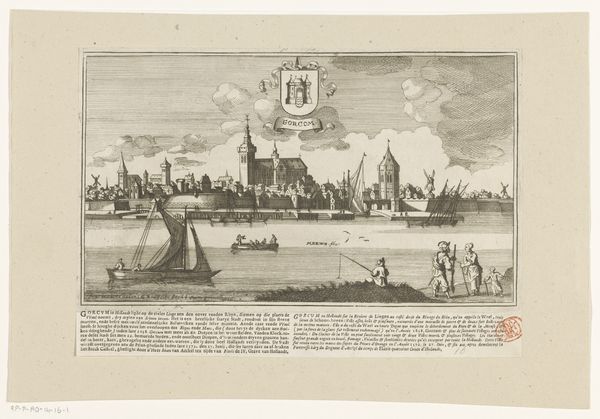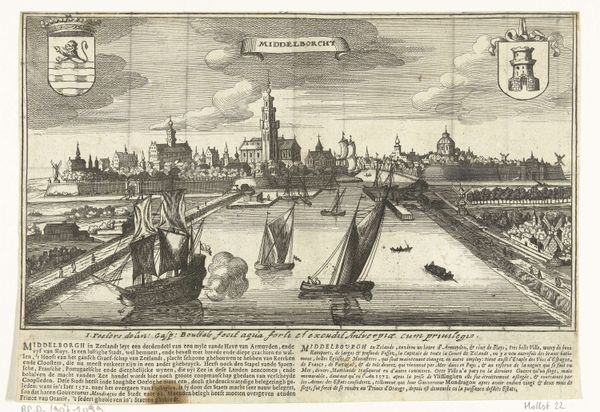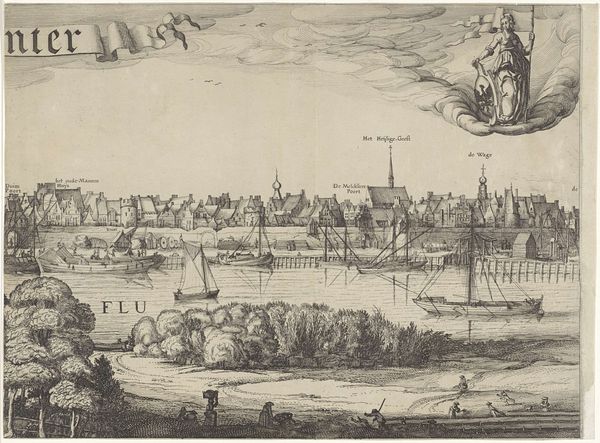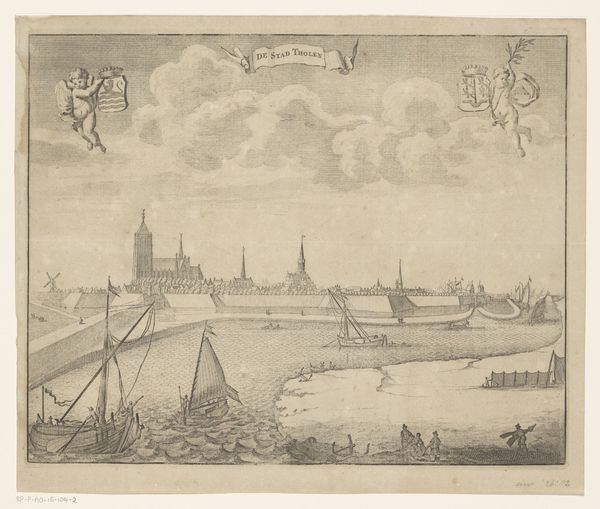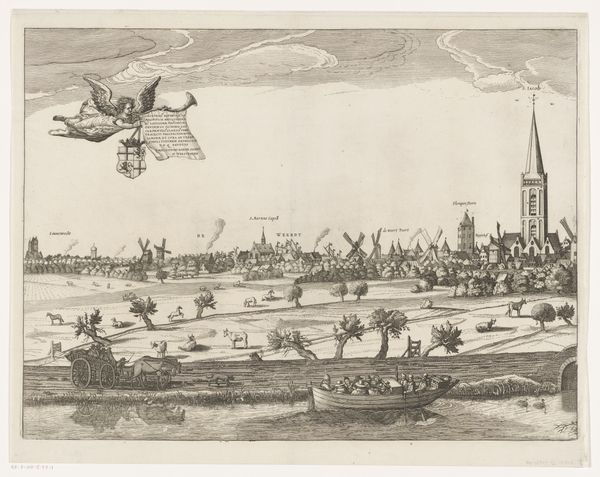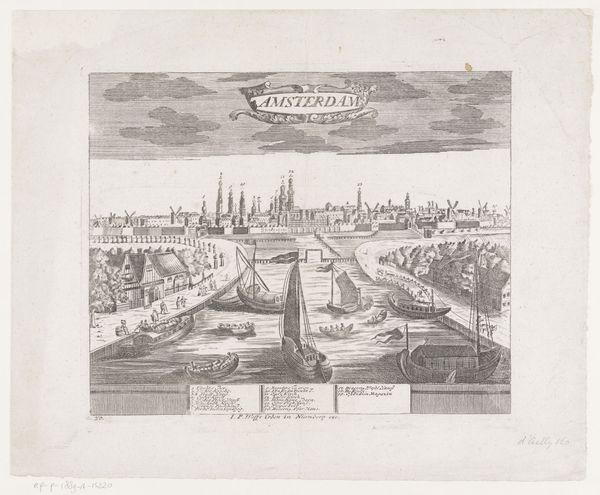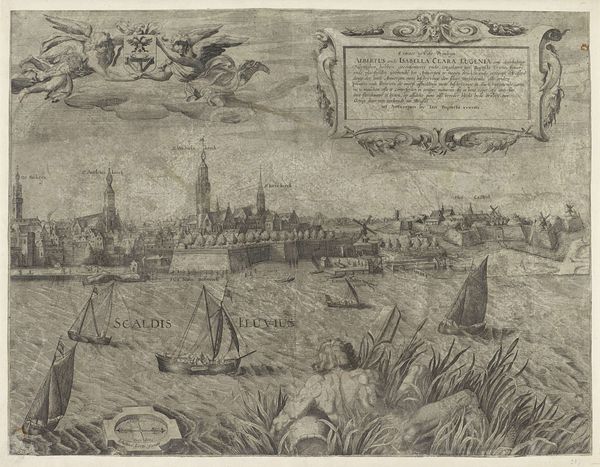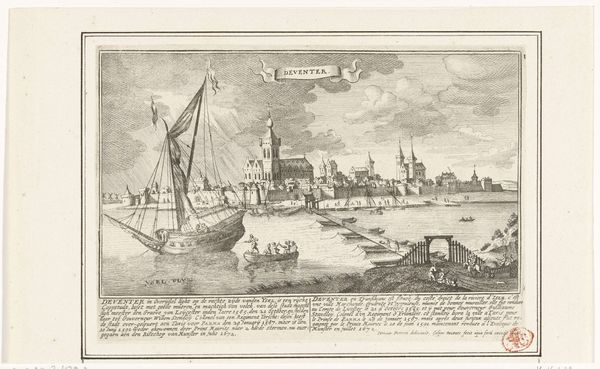
print, engraving
#
dutch-golden-age
# print
#
landscape
#
cityscape
#
engraving
Dimensions: height 204 mm, width 298 mm
Copyright: Rijks Museum: Open Domain
Curator: This print, held here at the Rijksmuseum, presents a meticulous "Gezicht op Groningen"—a View of Groningen—created sometime between 1709 and 1755 by an anonymous hand. The medium is engraving. Editor: It has a lovely linear quality. A very precise rendering that seems both documentary and somewhat fanciful in its detail. The city is neatly contained, almost as if observed through an architect’s precise gaze. Curator: Absolutely. Notice the composition; the city is laid out with rigorous symmetry, divided by roads and waterways, leading the eye toward the tallest spires and structures defining Groningen's skyline. The angel figures, positioned to the sides, holding what seems like inscriptions, further frame the space with visual and semiotic load. Editor: Yes, the materiality really jumps out at me too. It's all about labor here, isn't it? Consider the etching—each line is a result of conscious, skillful toil. Those symmetrical plots, cultivated areas around the city and orderly rows of what seem to be dwellings denote how profoundly humanity is shaping its environment. Curator: Quite so. I'm especially intrigued by how the cityscape interacts with the landscape. See how the orthogonal layout provides visual stability to contrast the slightly elevated horizon—and yet maintains balance using its internal elements, almost creating a mirror effect that adds structural harmony. Editor: Beyond the geometrical clarity, I see the context here too. This engraving doesn't exist in isolation. Printmaking made these kinds of views widely accessible. They reflected the growing commercial and social significance of Dutch cities, shaping public perception and possibly contributing to a shared regional or national identity. The work shows how landscapes can become resources as people work the land to create order. Curator: Interesting point. Ultimately, “Gezicht op Groningen” achieves an aesthetic that marries a specific period aesthetic style with that of functionality to inform and possibly romanticize a city. Editor: Indeed, seeing the city distilled like this gives a powerful feeling, connecting art, society and everyday labor in very interesting ways.
Comments
No comments
Be the first to comment and join the conversation on the ultimate creative platform.

